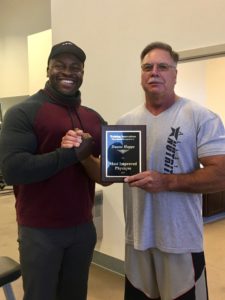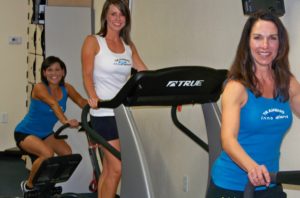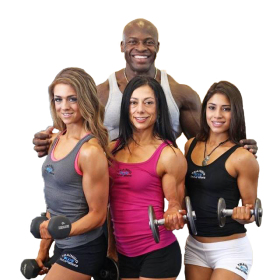k0rbi3
Staying Healthy and Fit as We Age
Staying Healthy and Fit as We Age
Bone Density Decreases
As we age our muscle mass, bone density, and flexibility naturally decrease. However, to what extent depends completely on the individual. The inescapable fact is that we’re all growing older and there’s not a darn thing we can do about it. It is the inevitable! However, thanks to modern medicine, we are living longer than ever. (Some go as far as to say, seventy is the new fifty!) This statement holds some truth if you have the quality of life to do the things you want to do.
Importance of Physical Activity
As we age, our bodies go through many changes. And although we may try and do everything in our power, we can’t completely prevent age-related declines in function. Both cognitive and physical. However, research suggests that regular physical activity and exercise throughout a person’s life can help slow many age-related functional declines. It can also prevent the onset of diseases related to obesity and sedentary behavior. Additionally, living a healthy lifestyle with regular physical activity can also help to reverse damage caused by a lifetime of inactivity.
Strength Training
Consistent physical activity, cardio and especially weight training, play a large role in staying healthy and fit as we age. Without spending some time in the gym strength training, you are sure to encounter muscle atrophy prematurely. From the time we are born, to around the time we turn 30, our muscles grow larger and stronger. After we reach our mid-thirties, this all changes. We start to lose muscle mass and function. The cause is age-related sarcopenia or sarcopenia with aging. Now physically inactive people can lose as much as 3% to 5% of their muscle mass each decade after age 30. Even if you are active, you’ll still have some muscle loss.
Regular Exercise
Limiting sedentary behavior throughout the lifetime may impact the degree of physical, psychological, and social success experienced by aging adults. Exercise has been shown to help regulate blood glucose. It also restores function of vasculature, reverses skeletal muscle aging and reverses coronary heart disease. It’s well known that exercise and a healthy lifestyle can help with disease prevention. In addition, it decreases the risk for all-cause mortality. It is less known that regular physical activity has played a huge role in reversing age-related cell changes, since it encourages the cells to make more proteins that help with energy production. Regular exercise, especially weight-training, enhances the machinery (ribosomes) to produce proteins, thus increases the production of proteins and enhances protein abundance in our muscles.
Never Too Late
If you realize you are amongst the mainly sedentary or currently inactive population don’t worry, it’s never too late to start. A great percentage of my personal training clients are in their “wiser-more mature” years and making better choices than the so called younger generation. They are fitter, stronger, and wiser too!! For more information on staying healthy and fit as we age, remaining agile, or if you’re frustrated with your current level of fitness and looking to hire a personal trainer, contact us.
CLICK HERE FOR YOUR FREE CONSULTATION!!!
Lose Weight By Eating Chocolate!
Lose Weight By Eating Chocolate!
Chocolate Contains Polyphenols
Thanks to certain flavonoids that exist in chocolate, this sweet treat has been found to decrease body fat. Flavonoids are plant-based nutrients that are prevalent in dark chocolate. The Cocoa in the dark chocolate is a rich source of high-quality polyphenols. Experimental evidence has shown that the consumption of cocoa polyphenols may do more than just help you lose weight.
Lowering blood sugar levels and reducing the risk of cardiovascular disease is another benefit of cocoa. What better time to discuss cardiovascular health than now in February? After all….. FEBRUARY IS HEART HEALTH MONTH! The American Heart Association will be the first to confirm that heart disease is the leading cause of death for both men and women in the United States. But the good news is, t is also one of the most preventable. Making heart-healthy food choices and increasing the amount of polyphenols in your diet can greatly decrease your risk.
Polyphenols Promote a Healthy Heart!!
Polyphenols are compounds found in foods such as tea, coffee, cocoa, olive oil, and red wine. And studies have shown that certain polyphenols strengthen the arterial walls of the heart. They also strengthen the lining of the blood vessels in the heart while promoting healthy circulation.
Polyphenols Help with Inflammation!!
When your body is inflamed, it experiences problems at the cellular level. Chronic inflammation has been linked to heart disease, cancer and diabetes. It has also has been found to increase insulin resistance, and interfere with feelings of hunger and metabolism-regulating hormones. Munching on dark chocolate in moderation can help prevent and repair the cellular damage caused by inflammation. This is because the flavonoids found in cocoa contain anti-inflammatory properties.
Still not convinced?
Polyphenols can help prevent cell damage caused by oxidative stress. Strong evidence shows that polyphenol-rich diets and foods, such as berries and olive oil, can lower “bad” cholesterol and increase “good” cholesterol. Polyphenols may help relax the blood vessels. Therefore, polyphenol-rich foods like olive oil and green tea may help lower blood pressure. Polyphenols may help reduce certain cancers, especially prostate cancer, through their anti-inflammatory and antioxidant effects.
The majority of polyphenols aren’t absorbed in the small intestine and instead travel to the large intestine, where they may promote the growth of healthy gut bacteria.There is strong evidence to suggest that different polyphenols can reduce blood sugar and other risk factors for diabetes. Polyphenols, particularly soy isoflavones, may support bone health. This is especially true later in life when they can reduce the risk of bone diseases like osteoporosis. Polyphenols can improve brain health in the elderly by reducing inflammation and oxidative stress.
Foods Rich in Polyphenols:
Cocoa powder: 3,448 mg per 100 grams. Dark chocolate: 1,664 mg per 100 grams. Flaxseeds: 1,528 mg per 100 grams. Blueberries: 836 mg per 100 grams. Black olives: 569 mg per 100 grams. Coffee: 214 mg per 100 grams. Almonds: 187 mg per 100 grams. Red wine: 101 mg per 100 ml. Green tea: 89 mg per 100 grams
For more information on a healthy heart diet, getting in shape, how to lose weight, reaching your fitness goals, or if you’re frustrated with you physique and looking to hire a personal trainer, contact us.
CLICK HERE FOR YOUR FREE CONSULTATION!!!
Eat More Fat to Lose Weight!!!
Eat More Fat to Lose Weight!!!
 “Korbie I eat healthy. I don’t eat red meat, I stay away from fatty fish like catfish, and I don’t eat eggs because they are high in fat and cholesterol. I also stay away from avocados and nuts because those are so high in calories”, these are just a few things I hear from some of my personal training clients when they initially inform me of their supposedly healthy eating habits. My “healthy eating” client had eliminated fats from their diet with the thought they were eating healthy. It doesn’t surprise me because for quite some time fat has gotten a bad rap as the guilty culprit to causing heart disease and other health problems. What if I told you to eat more fat to lose weight?
“Korbie I eat healthy. I don’t eat red meat, I stay away from fatty fish like catfish, and I don’t eat eggs because they are high in fat and cholesterol. I also stay away from avocados and nuts because those are so high in calories”, these are just a few things I hear from some of my personal training clients when they initially inform me of their supposedly healthy eating habits. My “healthy eating” client had eliminated fats from their diet with the thought they were eating healthy. It doesn’t surprise me because for quite some time fat has gotten a bad rap as the guilty culprit to causing heart disease and other health problems. What if I told you to eat more fat to lose weight?
Essential Fats
There are some fats that we have to consume through the diet that our bodies can’t make on it’s own. Polyunsaturated fats are known as “essential fatty acids” because our body can’t make them on it’s own. They help prevent weight gain, help build muscle, and help us burn our stored body fat. Polyunsaturated fats can be categorized further into omega 3(alpha linolenic acid reduces inflammation) and omega 6(linoleic acid increases inflammation)fatty acids.
Correct Balance
These fatty acids work great together in the body to help support our cellular function and to fight off illness when they are in the correct balance(there should ideally be a 1:1 ratio of omega 3 to omega 6). But the western diet is far too high in omega 6 fatty acid. The ratio is more like 20:1. A little inflammation isn’t bad as it helps fight off viruses and other illnesses, but when your body becomes too inflamed without the ability to bring the inflammation back down we end up with chronic illnesses and chronic pain. In order to create a better balance of our fatty acid ratio, we need to be more aware of the foods we consume.
Grass Fed Beef vs. Grain Fed Beef:
grass-fed beef contains significantly more omega-3 fatty acids and more CLA(conjugated linoleic acid) than grain-fed beef(because cows were not meant to eat corn and grains). Grass-fed beef, one of the best sources of protein around, is also higher in precursors for vitamin A and E and cancer-fighting antioxidants compared to grain-fed beef.
Omega-3 Eggs vs. Regular Layer Eggs:
Browsing the grocery aisle, you’re likely to find eggs with the words “omega-3” on the label. These eggs are different from regular eggs because they’ve been enriched with essential polyunsaturated fats, which is done by feeding laying hens flaxseeds which they convert into omega-3 fats. Enriched eggs typically cost more than standard eggs, but the added health benefits are worth the extra cost.
Wild Caught Salmon Vs. Farmed Salmon:
Salmon is known for its health benefits. It is a fatty fish that is loaded with Omega-3 fatty acids, which again most people don’t get enough of. However, today, a lot of the salmon we consume isn’t caught in the wild, but bred in fish farms. Whereas wild salmon eats what is found in its natural environment, farmed salmon is given a processed high-fat feed(corn, grain, and soy)in order to produce larger fish. Farmed salmon is much higher in Omega-6 fatty acids and has three times the amount of saturated fat. It also contains more calories, mainly from fat. Conversely, wild salmon is higher in omega-3 fats and various minerals, including potassium, zinc and iron.
Omega 3 Rich Foods
To sum it up folks, we need to pay closer attention to what we are eating. Because more important than what you ate, ask yourself what did what you were eating eat? That chicken breast you had for lunch…..what was its lunch before it became yours? We need to try to consume more foods that are rich in Omega-3 and limit our consumption of Omega-6 rich foods in order to balance our fatty acid ratios. Some foods high in Omega-3 include: walnuts, sardines, wild caught salmon, grass fed beef, pasture raised eggs, and flaxseeds.
Some foods high in Omega-6 include: vegetable oil, sunflower oil, corn oil, soybean oil, most salad dressings, most potato chips, most fast foods(including McDonalds, Wendys, Burger King, and even Subway), most cookies, candies, pastries, and corn fed chicken, pork, and beef. For more information on how to eat more fat to lose weight, or if you’re frustrated with your current level of fitness and looking to hire a personal trainer, contact us.
“TRI” This to Get Tight, Toned Triceps!
“TRI” This to Get Tight, Toned Triceps!
 When my personal training clients talk about wanting bigger arms, they’re usually referring to building biceps. However, there is more to developing those guns than just training biceps. What many athletes don’t realize is that without fully developed triceps, you will never build bigger arms no matter how much time you spend in the gym. A greater number of muscles make up the tricep than the bicep. Once you understand that strong triceps are imperative to building bigger arms, you need to make sure to use proper technique and form while training them. Steer clear from these tricep training mistakes!
When my personal training clients talk about wanting bigger arms, they’re usually referring to building biceps. However, there is more to developing those guns than just training biceps. What many athletes don’t realize is that without fully developed triceps, you will never build bigger arms no matter how much time you spend in the gym. A greater number of muscles make up the tricep than the bicep. Once you understand that strong triceps are imperative to building bigger arms, you need to make sure to use proper technique and form while training them. Steer clear from these tricep training mistakes!
Too Narrow of a Grip on Close-Grip Bench Press: This multi-joint exercise might be part of your triceps routine, but did you ever give thought to the optimal grip width? I’ve seen a number of athletes close the gap between their hands and place them against each other as if this would optimize muscle recruitment. While triceps activation increases once you move your hands in from a regular bench press, no research indicates that the activation increases further, as your hands close the gap. What can increase, however, is the strain on your wrists and elbows. Too much pressure on your shoulders reduces the activation of your triceps, which then becomes counterproductive. Solution: Try a grip from 10-14 inches apart, or just inside shoulder width. From there, experiment slightly with hand positions to determine what feels right for you.
Letting Your Elbows Drift During Kick-Backs: This is a common error even among experienced athletes. From the arm-extended position with your elbow by your side, you allow your elbow to drop along with the forearm as you lower the weight. As you kick your hand backward, you simultaneously raise your elbow back up. This little movement turns a classic single-joint move emphasizing the lateral triceps head into one that also recruits the delts. Solution: Lock elbows by your side so that your upper arm is parallel with the floor—and keep it there. With the dumbbell hanging at 90 degrees and your elbow serving as a hinge, contract your triceps to fully straighten your arm. As you lower the weight, don’t allow your elbow to drop.
Flaring Elbows During Overhead Extensions: Single-joint exercises for the triceps all have one thing in common: elbow extension. The elbows go from a highly bent position where you are feeling the triceps stretch, to fully straightened, where the triceps are contracted. Simple enough, right? However, if your elbows are stationary in a flared-out position, you can and will lose muscle isolation and limit the effectiveness of the exercise. Flaring of your elbows allows your delts and pecs to assist in each rep, reducing focus on the triceps. Keep those elbows tucked. Solution: Using an EZ-bar and taking a slightly wider grip often makes this challenge somewhat more manageable, but you’ll still want to be conscious and wary of elbow flare.
Letting Your Elbows Move Forward During Push-Downs: Several athletes get this staple triceps move wrong by not paying as much attention to the eccentric as the concentric. I’m not referring to keeping the negative under control in speed, either. As you approach the end of the range of motion, you can still allow the weight to keep pulling your hands forward and up, pulling your elbows away from their place by your sides. Once again, you will see movement in the shoulder joint, turning a single-joint movement into a multi-joint movement. All that extra work you have to do on each rep to reposition your elbows back by your sides for each rep is a wasted energy. Keep those shoulders out of the equation. Solution: If you find it impossible to keep from doing this, you’re going too heavy on, of all things, push-downs. Instead, keep the movement strict by maintaining your elbow position for the entire set, reversing the motion on the eccentric phase before your elbows begin to pull forward. Recap: Pay close attention to where your arms are, especially the elbow in relation to the body. Focus on contracting just the triceps. Do these exercises close to a mirror to watch movement and form. Don’t be afraid to start with a lighter weight to get the form down. For more information on building leaner, more muscular arms, weight loss, health and fitness, or a nutrition plan designed specifically for you, or if you’re looking to hire a personal trainer, look no further contact us today and watch your physique transform!
Best Post Workout Meal?(Carbs No Carbs)
Best Post Workout Meal?
 A question often asked by my personal training clients is…what is the best post workout meal? This is a tricky question to answer because the answer may vary depending on several variables. What are your fitness goals(are you trying to build more muscle, or lose fat)? What was your perceived amount of exertion during your workout(A leg workout is going to be a lot more challenging than an abdominal workout). Consuming the right nutrients post workout is essential for muscle recovery.
A question often asked by my personal training clients is…what is the best post workout meal? This is a tricky question to answer because the answer may vary depending on several variables. What are your fitness goals(are you trying to build more muscle, or lose fat)? What was your perceived amount of exertion during your workout(A leg workout is going to be a lot more challenging than an abdominal workout). Consuming the right nutrients post workout is essential for muscle recovery.
What Happens To My Muscles During a Workout?
When working out, we are actually breaking down our muscles and using up glycogen stores for fuel. This results in your muscles being very depleted of glycogen and protein after your workout. It is important to start that rebuilding process as soon as possible after an intense workout. This way your body can replenish its glycogen stores and repair and regrow those muscle proteins(thus enhancing recovery). Eating the appropriate balance of carbs and protein after your workout decrease muscle protein break-down, increases muscle protein synthesis (growth) and restores glycogen stores which enhances recovery.
Proteins
To replenish your protein post workout, I usually have my personal training clients drink a protein shake. If you’ve just worked out with one of the personal trainers at Training Innovations, it’s highly likely that your body is very depleted and you need something that is going to get into your system very quickly. So you want to consume something that is going to be fast acting, like a high quality whey protein. Not a steak or a hamburger. The same thought process applies when it comes to post workout carbohydrates.
Carbohydrates
Some good fast acting carbohydrates I usually recommend to my clients are Cream of Rice, Honey Nut Cheerios, and the flavored packets of oatmeal. Yes I said flavored packets. But isn’t that too much sugar? The answer is no! You actually want an insulin spike post workout to help shuttle all the nutrients into the muscles. Now this doesn’t mean you can go crazy and have a stack of pancakes smothered with a ton of maple syrup. But a little bit of sugar post workout is actually gonna be beneficial. For more information on the best post workout meal, how to lose weight, or if you’re frustrated with your current level of fitness and looking to hire a personal trainer, contact us.
Build A Better Back!
Build A Better Back
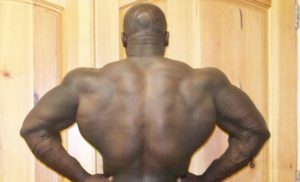 I’m sure you’ve seen that one individual that cracks a joke and nobody laughs. Then another individual cracks the very same joke and everybody laughs. I’ve always said it’s not the joke, but instead the delivery that causes the laughter. The same can be said about weight training. Two individuals can perform the same exercise and get very different results from the exercise. It’s not the exercise that counts, but instead how your perform the exercise that will determine the results you get. With several years in the personal training and fitness industry, I have witnessed hundreds of fitness enthusiasts performing exercises incorrectly. They spend hours upon hours in the gym doing every exercises they’ve read that their fitness idols perform, only to fall short of their fitness goals. Poorly-performed exercises are unproductive. Not only will you see limited to no results, but without proper control and form, you leave yourself at risk for injury. One of the most commonly incorrectly performed exercises I see in gyms is the one arm dumbbell row. This exercise is great for developing a stronger, more muscular back when performed correctly. But in order to perform this exercise correctly, there are a few things you need to think about.
I’m sure you’ve seen that one individual that cracks a joke and nobody laughs. Then another individual cracks the very same joke and everybody laughs. I’ve always said it’s not the joke, but instead the delivery that causes the laughter. The same can be said about weight training. Two individuals can perform the same exercise and get very different results from the exercise. It’s not the exercise that counts, but instead how your perform the exercise that will determine the results you get. With several years in the personal training and fitness industry, I have witnessed hundreds of fitness enthusiasts performing exercises incorrectly. They spend hours upon hours in the gym doing every exercises they’ve read that their fitness idols perform, only to fall short of their fitness goals. Poorly-performed exercises are unproductive. Not only will you see limited to no results, but without proper control and form, you leave yourself at risk for injury. One of the most commonly incorrectly performed exercises I see in gyms is the one arm dumbbell row. This exercise is great for developing a stronger, more muscular back when performed correctly. But in order to perform this exercise correctly, there are a few things you need to think about.
(Now keep in mind, this particular exercise can be done by either placing one knee on a weight bench or bent over using the dumbbell weight rack for support. I am describing the latter version in this blog)
Performing the Standing One Arm Dumbbell Row Correctly
The first thing you need to think about is foot placement. Proper foot placement will ensure that you have a solid base and will eliminate extraneous body movement. Plant both feet firmly on floor about shoulder width apart, knees slightly bent, squaring up your hips. Tighten your abs as you bend over at the waist to about a 70 degree angle. The second thing you need to think about is hand placement on the Dumbbell rack. Make sure your hand is firmly place against the rack and your supporting arm locked to prevent any forward and back movement. Keep the back arched throughout the movement to ensure a complete contraction in the muscle. The third thing you need to think about is to initiate the movement with the muscle you’re trying to work. Start by contracting your lat, then lead with your elbow, pulling the dumbbell back and up towards your hip. Contract your lat hard at the top of the movement. And hold the contraction for 2 seconds with every rep. Lower the weight slowly back down to the starting position. This is one rep. Repeat 8 to 15 reps before switching sides.
What You Want to Avoid!!
Avoid excessive body movement, rounding your back, and using momentum to get the weight up. For more information on losing weight, health and fitness, or nutrition plan designed specifically for you, or if you’re looking to hire a personal trainer, look no further contact us today and watch your physique transform!
Hidden Sugars In Your Food?
Are there Hidden Sugars In Your Food?
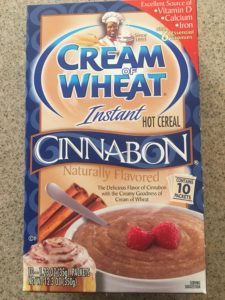 Too Much Sugar
Too Much Sugar
The average American consumes 22 teaspoons of sugar a day. And the American Heart Association recommends that the consumption of added sugar not exceed 6 teaspoons daily for women and 9 teaspoons daily for men. You can see how all this added sugar is the main culprit when it comes to major causes of weight gain. It is also the main culprit in type 2 diabetes. Now you may be thinking that because you have a tendency to select “sugar free” foods, you are ok right? Wrong! Don’t fall victim to the “hidden sugars in your food effect”! You may not see it, because it’s often cleverly hidden under a different name!
Hidden Sugars
The FDA has certainly acknowledged and tried to define the term “added sugars.” This term refers to sugars that aren’t naturally occurring in foods(like fruits). But it is up to us to investigate and learn all the various names for sugar. And more importantly, how much of it we’re actually putting into our bodies. You see they’re even disguised to sound somewhat healthy, corn syrup, brown sugar, honey, brown sugar syrup, dextrose, and fructose. Sugar also masquerades under names like fruit juice concentrate, glucose, invert sugar, modified food starch, and maltose. Trying to figure out what percentage of calories these sugar substitutes represent in a packaged food product is almost impossible. It would be like scoring a concert ticket to Michael Jackson— it’s pretty much…..impossible!
Nutrition Facts
The reason for this is the FDA has refused to add an “Added Sugars” line (in grams). The line should sit within the “Sugars” section on the nutrition facts label. Instead, added sugars are only mentioned in the ingredient list. And only in decreasing order by weight, not by percentage of calories. Of course food production companies have discovered this loophole and are now taking some extreme liberties. Not only are they using some of those disguised sugar synonyms in the ingredient list, but they’re also using several of them in a single product.
Added sugars are added sugars. No matter what you call them, they continue to have a negative effect on your body. They make food sweet and make you fat. By dividing the total amount of added sugars into three or four different sugar names instead of using just one type of sugar, companies are able drop their added sugars further down the list; the less the weight, the lower the rank on the ingredient list.
Health Problems
Why should we let this concern us? Because a diet high in added sugars usually equates to lower levels of fiber, vitamins and minerals, and other nutrients. By displacing fiber, vitamins and minerals, and other protective nutrients, added sugars may increase the risk of type 2 diabetes, certain cancers, high blood pressure and other health problems. For more information on hidden sugars in your food, health and fitness, losing weight, getting in shape, working out, or if you’re frustrated with your current level of fitness and looking to hire a personal trainer, contact us.
Exercises to Build Your Biceps!
Exercises to Build Your Biceps!
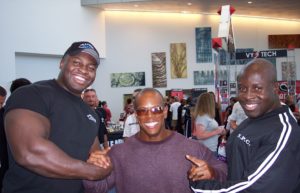 In a previous blog, I shared with you three exercises to build your biceps. However, it doesn’t end with just those three exercises. Following the same conventional exercises forever doesn’t just get monotonous, it can also lead to stagnated growth of the muscles. To make the changes you’re looking for and improve your physique, some out-of-the-box thinking may be required. Like every muscle, the biceps need new stimuli to evolve. This means getting creative with your workouts. Being a competitive bodybuilder and personal trainer has forced me to incorporate many tricks to help my biceps grow. And those same tricks have helped me avoid plateaus. Here are three bicep exercises I like to incorporate into my routine that I also share with my personal training clients.
In a previous blog, I shared with you three exercises to build your biceps. However, it doesn’t end with just those three exercises. Following the same conventional exercises forever doesn’t just get monotonous, it can also lead to stagnated growth of the muscles. To make the changes you’re looking for and improve your physique, some out-of-the-box thinking may be required. Like every muscle, the biceps need new stimuli to evolve. This means getting creative with your workouts. Being a competitive bodybuilder and personal trainer has forced me to incorporate many tricks to help my biceps grow. And those same tricks have helped me avoid plateaus. Here are three bicep exercises I like to incorporate into my routine that I also share with my personal training clients.
1. Drag Curl:
This is one of the best exercises to build the biceps. This exercise can be performed with either a barbell or dumbbells and either seated or standing. Start by angling your upper body slightly forward, keeping your back flat. With your arms extended downward you’ll bend your elbows a little so they are behind your body instead of keeping your elbows in line or slightly in front of your body like a traditional bicep curl. Then you “drag” the weight up your body allowing your elbows to travel behind your body until your biceps are fully contracted. Then lower and repeat. A good rep range for this exercise would be 6 – 12 reps. You’ll find the drag curl to be easier than standard bicep curls, allowing you to use more weight(thus increasing muscle fiber recruitment).
2. The Preacher Curl:
This is a great biceps exercise due to the fact it stabilizes your elbow against a preacher bench, isolating your biceps ensuring they are the muscles doing all of the work. Grab a dumbbell or barbell and place the upper arms on top of the preacher bench or the incline bench. Slowly lower the weight until your upper arm is extended and the biceps is fully stretched, then tense the biceps to curl the weight up until your biceps is fully contracted. Lower and repeat. A good rep range for this exercise would be 8 – 15 reps. I would recommend to perform this exercise toward the middle to the end of your workout to ensure the muscle is thoroughly warmed up, due to the intense stretch it places on the biceps
3. Standing Cable Curls:
This is a great movement t0 provide constant tension to the biceps. Standing up with your torso upright, grab the bar with a either a wide or narrow grip. Keeping your elbows close to your sides and either parallel with your body or slightly in front of your body, curl the weight up while contracting the biceps. Do not swing it up as you will be taking tension off of the bicep. Lower and repeat. A good rep range for this exercise would be 10 – 20 reps.
With all the hype on building bigger biceps, it’s easy to forget that they are a small muscle group. So if you try to use too much weight when training them, bigger muscles can easily take over. This is often the root cause of slow progress with biceps development. The other problem is having a poor mind-muscle connection with the biceps, and failing to immerse this specific area with enough blood and trauma to force growth. For more information on exercises to build your biceps, trimming the fat off your waistline, improving your physique, or if you’re frustrated with your current level of fitness and looking to hire a personal trainer, contact us.
Meal Prep Made Easy!
Meal Prep Made Easy!
 A healthy lifestyle does not happen overnight. Now I know what you’re thinking…..cardio, weight training, duration of the two, what to train when. Oh no then there’s nutrition!!!!! What do I eat, when do I eat it and how much do I eat?? Well I’m going to simplify things for you a bit. This simple rule I am going to share with you is as easy as 1-2-3. Now of course this rule is one that comes with modifications depending on your fitness goals. However, the concept remains the same. It is the thirds rule. The next time you sit down to have your meal, take your plate, and divide it into thirds. Fill 1/3 with protein, 1/3 vegetables, and 1/3 carbohydrates. Simple as that. As previously stated this rule is made to be modified depending on your fitness goals. The modifications will be in the types of protein, carbs, and veggies you consume. For a more detailed selection that is going to fit your individual needs and fitness goals, visit a certified specialist in fitness nutrition like myself. I will develop a plan that is specifically for you that will get you the results you want. We will take a closer look at what you need in your diet to live that healthy lifestyle and get you in your best shape ever. We will discuss what and how much you need of the following….
A healthy lifestyle does not happen overnight. Now I know what you’re thinking…..cardio, weight training, duration of the two, what to train when. Oh no then there’s nutrition!!!!! What do I eat, when do I eat it and how much do I eat?? Well I’m going to simplify things for you a bit. This simple rule I am going to share with you is as easy as 1-2-3. Now of course this rule is one that comes with modifications depending on your fitness goals. However, the concept remains the same. It is the thirds rule. The next time you sit down to have your meal, take your plate, and divide it into thirds. Fill 1/3 with protein, 1/3 vegetables, and 1/3 carbohydrates. Simple as that. As previously stated this rule is made to be modified depending on your fitness goals. The modifications will be in the types of protein, carbs, and veggies you consume. For a more detailed selection that is going to fit your individual needs and fitness goals, visit a certified specialist in fitness nutrition like myself. I will develop a plan that is specifically for you that will get you the results you want. We will take a closer look at what you need in your diet to live that healthy lifestyle and get you in your best shape ever. We will discuss what and how much you need of the following….
Protein: Protein is going to help you burn fat, build lean muscle mass, and help with muscle recovery. Protein is an essential component of every cell in the body. Protein choices may consist of grass fed beef, chicken, turkey, salmon, tilapia, and bison just to name a few. Now some of these proteins are leaner than others and depending on your fitness goals, would be better paired with certain carbohydrates.
Carbohydrates: Carbohydrates are your body’s main source of energy. When you take in carbs, your body breaks down the sugars and absorbs it into your bloodstream. At this point, it becomes glucose. Your body needs glucose to have the energy to do everything from breathing to weight training. I’m sure you have heard of simple carbs versus complex carbs, both have their benefits. Again, depending on your fitness goals, there is a place in your meal plan where they fit in perfectly. Brown rice, sweet potato, basmati rice, oatmeal, select cereals, and yes, even bread can be great sources of carbohydrates.
Vegetables: Vegetables keep the internal systems in perfect condition. The consumption of vegetables takes care of your digestive, excretory, and skeletal system, as well as blood pressure levels. With a diet rich in vegetables, you benefit from abundant amounts of antioxidants that prevent diseases like cancer, cardiovascular problems and strokes. Moreover, vegetables deliver ample amounts of vitamins, including folate, vitamin A, vitamin K. Fill 1/3 of your plate with collard greens, asparagus, spinach, kale, a salad that includes cucumbers, celery, mushrooms, and tomatoes. Just beware of the creamy fat filled dressings. Some vegetables contain a great deal of natural sugars which aren’t always the best to choose from. I usually don’t recommend, peas, carrots, corn and even certain types of squash could be considered starchy vegetables.
When you follow the Thirds Rule, you will have a balanced meal with all three macronutrients that are essential for a healthy lifestyle. There you have it my friends, the rule of three. For more information on nutrition, a meal plan that fits your individual needs, fitness goals, and body type, or if you’re looking to hire a personal trainer contact us.
Burn Body Fat Efficiently By Using Cardio!!
Burn Body Fat Efficiently By Using Cardio!!
Doing Too Much Cardio
Korbie, I do 60 minutes of cardio a day and that’s just in the morning. How can my weight be staying the same? I like to mix my cardio up, so it’s never the same thing. I might do a spin class one day, then body pump the next, then maybe a hot yoga class… These are some of the things I’ve heard from my personal training clients regarding what they did with cardio before coming to see me. Are you too falling victim to the overly obsessed cardio craze? What many people fail to understand is that there needs to be some kind of structure to your cardio routine in order to burn body fat efficiently. Two common mistakes that I see people making frequently when it comes to cardio is starting off with too much and engaging in random cardio.
1. How Much Is Too Much?
That’s right….You read it correctly. There is such a thing as starting off with too much. You see, we humans are the most adaptive creatures on this Earth. Our bodies get used to extended exercise, using oxygen and energy more efficiently, resulting in diminishing returns in fitness and fat loss. After this adaptation occurs, the only other option to continue to burn fat is to increase your expenditure. What does this mean? Chronic Cardio-can you picture yourself doing 2 hours of cardio a day to make that scale dip in the desired direction? Don’t make this mistake and start off with too much leaving little room for progression. Each person’s fitness goal is different, therefore, the cardio duration for one individual may not be the ideal prescription for you.
2. Random Cardio will Result in Random Fat Loss!!
I go to a spin class on Monday, body pump on Tuesday. And I do lunges, planks, and burpees at the park with my girlfriend on Wednesday……That is what I call random cardio because it’s impossible to track. Using cardio as a tool to burn calories requires a plan. Once that plan is developed you then proceed to execute the plan. I often compare cardio to finances. Input vs. In order to get control of your finances you must know your income vs. how much you’re spending. Well, the same concept applies with your cardio. To burn belly fat, you must know what your consumption is, calorie intake, and know what your expenditure is, calories being burned. With random cardio you have no idea how much you are actually expending, the intensity of the cardio and so on.
If you’re looking for more information on how to burn body fat with cardio or if you’re frustrated with your current level of fitness and looking to hire a personal trainer, contact us

